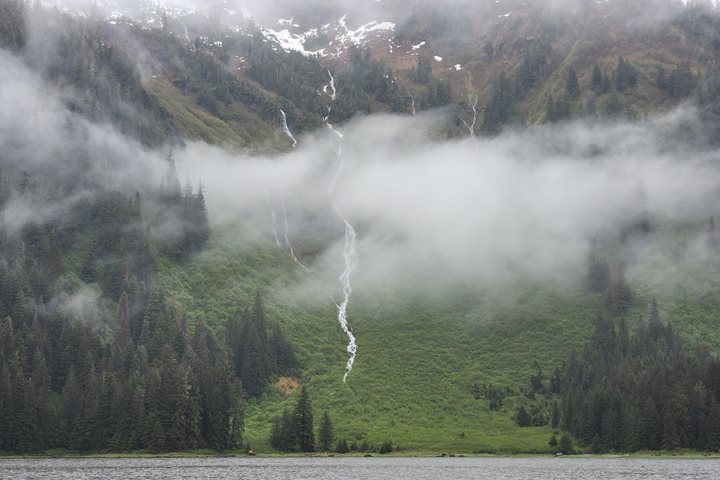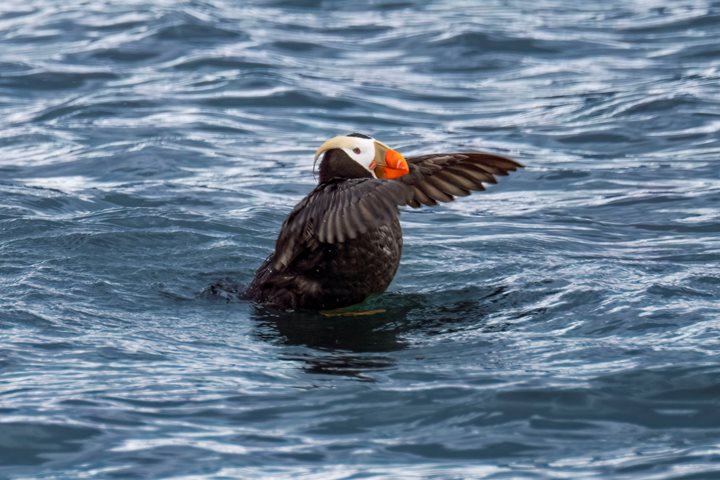We were treated to our first dolphin sighting of the trip before breakfast: killer whales. One male and one female killer whale were observed in close proximity as National Geographic Quest sailed through Holkam Bay, past Harbor Island en route to Dawes Glacier. That’s correct: killer whales are the largest members of the dolphin family. They have strong familial ties with the mother being the “lineage holder.” Adult males will stay with their mothers throughout their lives. There are two well-known types of killer whales. Transients tend to travel in larger groups as they hunt mammals such as harbor seals. They will not vocalize as much as resident killer whales since they are trying to ambush and sneak up on their prey. Resident killer whales will feed predominantly on fish and will vocalize a bit more with family members.
Shortly after breakfast we were treated to our first whale siting of the trip: humpback whales. From the ship, we observed a couple of individuals’ flukes, and them spouting as they dove. The exposed tail fluke indicates the whale is likely heading down for a little feeding session which could last several minutes (five to six). A good look at the underside of a tail fluke is a great way to identify individuals. This region will have different patterns of black and white, ranging from all black to mostly white and anywhere in between. They are unique to the individual and therefore is very much like a fingerprint.
Guests were then treated to some mandatory briefings that would prep them for all the adventures in store during this voyage. They learned about traveling in bear country, loading and unloading Zodiacs, appropriate “dress code” for Southeast Alaska, and an overview of how operations will take place on National Geographic Quest. At about 11 a.m., as the photo instructor, I presented a program on expedition photography, answered a few questions, and then assisted with the B&H equipment program. This program provides a fantastic opportunity for guests to test out various cameras, lenses, and binoculars.
This proved to be perfect for several guests that wanted to test out a piece of equipment traveling through upper Endicott Arm and to the face of Dawes Glacier. Dawes Glacier is a tidewater glacier, meaning it travels from the mountains and terminates at sea level and is therefore affected by the tides. Tidewater glaciers are known for spectacular calving events: when large chunks of a glacier cascade from its face into the water. The splash is oftentimes incredible! These chunks are the birth of icebergs ranging in size. The larger ones provide important habitat for harbor seals that use the icebergs to haul out, molt, give birth to, and raise their pups. With calving AND harbor seals observed, Dawes Glacier did not disappoint!







